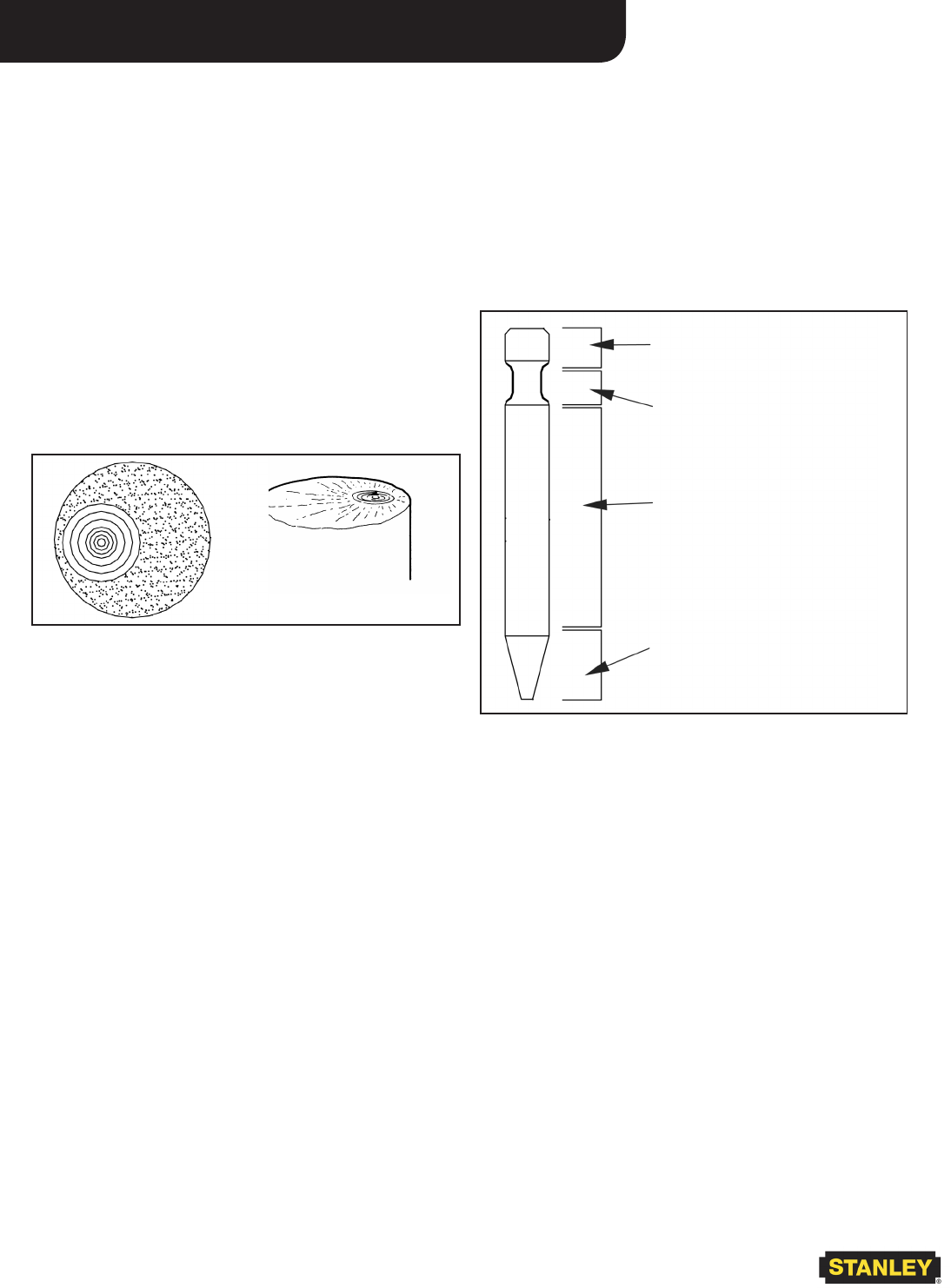
22 ► MB656 User Manual
PROPER USE & CARE OF TOOL BITS
TOOL FAILURE COVERED UNDER
WARRANTY
INTERNAL MATERIAL FLAW
This failure occurs when a foreign material is rolled into
the steel during the manufacturing process, causing an
imperfection in the internal material aw grain. The re-
sult is an inherent weakness in the tool shank and even-
tual breakage.
The fatigue failure is started by the defects within the tool
bit. The broken surface exhibits a shell pattern around
the starting point of failure, like that in the fatigue failure.
The other parts of the broken surface are brittle.
This is the only kind of tool bit failure that is always
covered under warranty.
Figure 25. Internal Material Flaw
As a rule, working steel failures can be diagnosed by
looking at the break itself, and at the place on the steel
where the break occurred. Discoloration, like “rainbow”
effects or blue bands, is the result of extreme heat.
Look for surface cracks, galling, or gouge marks. Breaks
that start as surface damage have a “sea shell” pattern,
with the damaged spot at the center. A large “sea shell”
indicates a slow growing break; a small one indicates
one compounded by side stress.
Stress failures start small, and spread into the center
of the steel. In a stress failure, the coarser the grain,
the greater the stress was, and the more rapid was the
failure.
• Failures in this area are usually the result
of blank ring, worn bushing(s), worn re-
tainer pin(s) or the lack of lubrication.
• Failures in this area are usually the result
of worn retainer pin(s) or blank ring.
• Failures in this area are usually the result
of prying, metal-to-metal contact or corro-
sion. Prying failures often exhibit a shell-
like formation near the edge of the steel
diameter where the break began, and a
“tail” opposite that where the remaining
steel bent and tore.
• Failures in this area are usually the result
of heat build-up, mushrooming, or improp-
er contact with the work.
Figure 26. Diagram of Tool Bit Failures


















